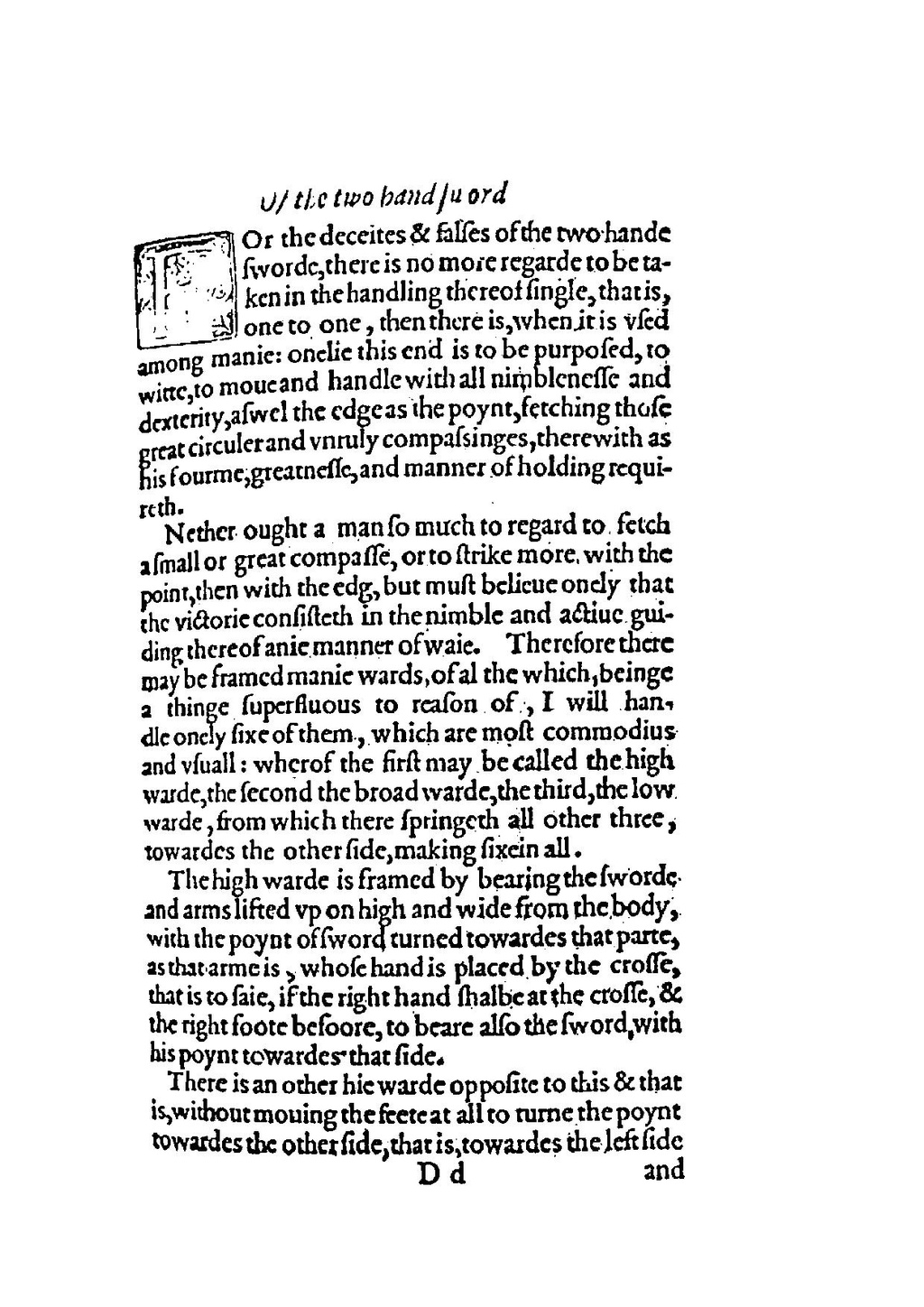Of the two hand sword
FOr the deceites & falses of the two hande sworde, there is no more regarde to be taken in the handling thereof single, that is, one to one, then there is, when it is vsed among manie: onelie this end is to be purposed, to witte, to moue and handle with all nimblenesse and dexterity, aswel the edge as the poynt, fetching those great circuler and vnruly compassinges, therewith as his fourme, greatnesse, and manner of holding requireth.
Nether ought a man so much to regard to fetch a small or great compasse, or to strike more with the point, then with the edg, but must beliue onely that the victorie consisteth in the nimble and actiue guiding thereof anie manner of waie. Therefore there may be framed manie wards, of al the which, beinge a thinge superfluous to reason of, I will handle onely sixe of them, which are most commodius and vsuall: wherof the first may be called the high warde, the second the broad warde, the third, the low warde, from which there springeth all other three, towardes the other side, making sixein all.
The high warde is framed by bearing the sworde and arms lifted vp on high and wide from the body, with the poynt of sword turned towardes that parte, as that arme is, whose hand is placed by the crosse, that is to saie, if the right hand shalbe at the crosse, & the right foote befoore, to beare also the sword, with his poynt towardes that side.
There is an other hie warde opposite to this & that is, without mouing the feete at all to turne the poynt towardes the other side, that is, towardes the left side

